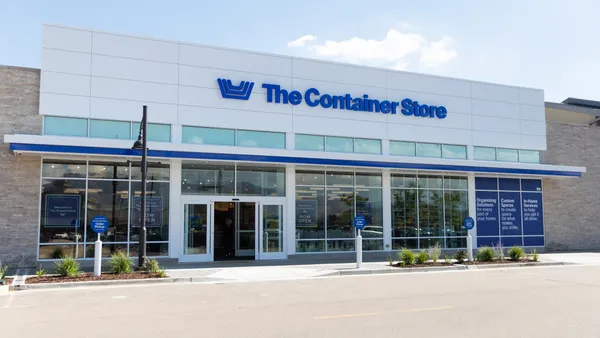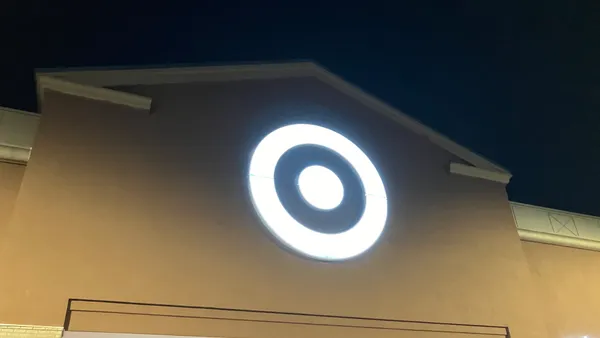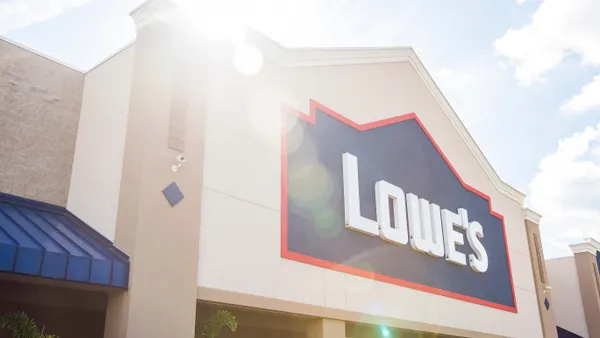Dive Brief:
-
The U.S. retail market has grown 3.8% so far this year — topping 2016’s 2.4% growth — and will reach $3.56 trillion, according to two reports from Forrester research analysts emailed to Retail Dive.
-
U.S. online sales will rise 14% this year to $459 billion, accounting for 12.9% of total retail sales, according Forrester. The research firm estimates e-commerce will account for 17% of U.S. retail by 2022, with apparel, consumer electronics, and computers accounting for almost one-third of total online sales.
-
Amazon continues to dominate, Forrester found. The e-commerce giant’s global net retail product sales grew 19% year-over-year in 2016. Last year 83% of adult Americans made a purchase from Amazon and 55% used the company's platform as a research resource before making a purchase, suggesting that many shoppers use Amazon for shopping research before purchasing elsewhere, Forrester said.
Dive Insight:
E-commerce is breaking 10% of overall retail sales, according to this report, though other research, including the first-quarter report from the U.S. Commerce Department, still places it below that line, at 8.4%.
Digital sales are also growing as a percentage of the overall market, and that’s hurting retailers’ bottom lines. Analysts are increasingly taking into account the damage the shift to e-commerce is inflicting on retail margins. In addition to tepid sales overall, “the shift to the variable-cost model of e-commerce from the fixed-cost store model continues to suppress operating margins for the sector,” Moody’s Investors Services retail analysts said in a report on U.S. department stores emailed to Retail Dive earlier this year.
The variable cost model will undermine digital growth at some point, according to retail analyst Nick Egelanian, president of retail development consultants SiteWorks International. “When shipping costs are fully allocated to the consumer some time in the future, we will see the rate of internet sales growth sharply decline,” he said in an email to Retail Dive earlier this year.
And stores remain important in their own right. In fact, much of the decline in brick and mortar is due to the over-abundance of physical stores and a lackluster store environment otherwise, Forrester said. The U.S. is now at an average of 24 square feet of retail space per capita — compared with 16 square feet for every Canadian and just 4.6 square feet for every Britain, according to Forrester. The analysts noted data from CoStar showing that sales per square foot at most retailers have declined in recent years, down from almost $375 in the early part of the 21st century to $325.
That’s leading to a correction, which has already begun, according to one of the reports. Some 2,000 stores nationwide closed in 2016, 5,000 in 2015, and 3,000 in 2014. “This may seem like a lot, but those combined 10,000 closings in the past three years equal just 0.7% of the 1.44 million retail establishments that the U.S. Census Bureau counts,” Forrester said. “Many of the closings are happening in ‘weak malls’ — meaning that these retailers are more exposed than retailers in other locations.”
But plenty of stores are opening, too, according to Forrester, which noted that IHL counted 2,861 publicly announced store openings in May, with more to come. What’s holding retailers back, according to Forrester analysts, are “unresolved pain points, undifferentiated experiences, decisions based on opinion rather than data, focusing on product assortment instead of CX and an unwillingness to significantly change their organizations and business-stifling bureaucracy.”













